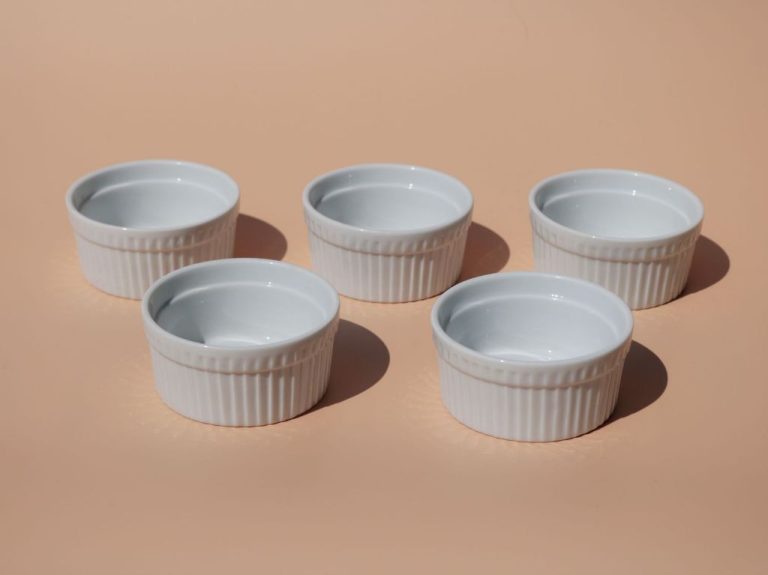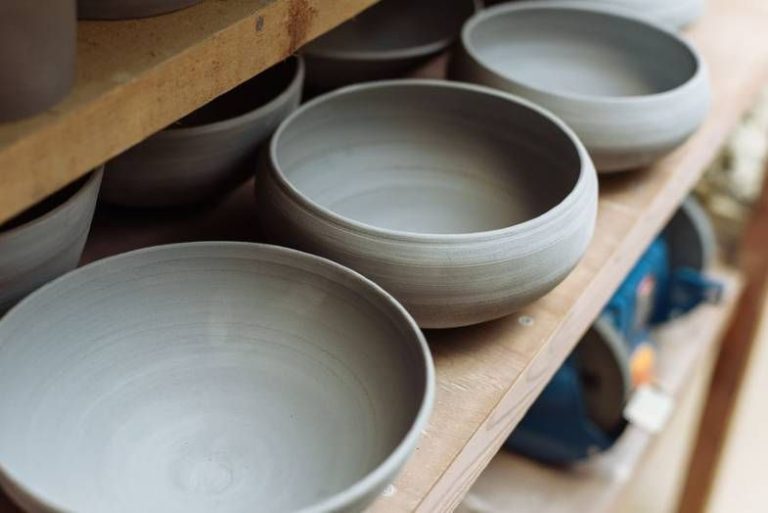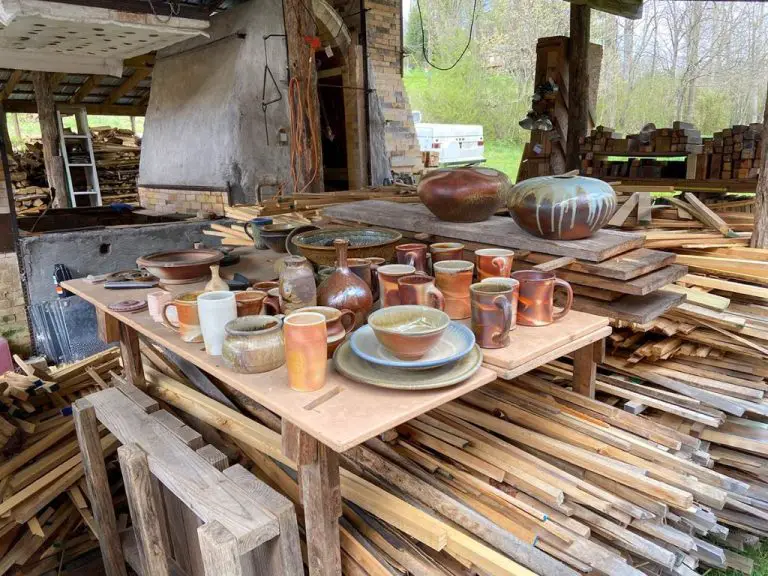What Is Pottery Activity?
Pottery is clay that has been shaped and then hardened through heating or firing. The earliest pottery artifacts date back over 20,000 years to prehistoric times. Pottery has been an important technology and art form in many cultures for thousands of years. There are several main types of pottery including earthenware, stoneware, and porcelain. Each type varies in characteristics like color, texture, porosity, and durability based on the clay composition and firing process.
The earliest pottery was made from clay and fired at low temperatures in pit fires or open bonfires. As firing techniques advanced, potters were able to create finer clay bodies and glazes. Wheel-thrown pottery was invented during the Neolithic period, enabling more symmetrical and thinner-walled vessels. Ancient pottery was often functional cookware, storage jars, or religious and ceremonial vessels. However, pottery has also been made as art, wall hangings, or architectural decor since prehistoric times.
Examples of early pottery have been found in East Asia, dating back 18,000-20,000 years in China and Japan. In the Near East, fired and glazed pottery began as early as the 9th millennium BCE. Indigenous cultures in South America independently developed pottery beginning around 10,000 BCE. Pottery and ceramic art has continued to evolve along with human civilization around the world.
Clay
There are several types of clay that can be used for pottery making. The main types of clay are earthenware, stoneware, porcelain, ball clay, and fire clay. Each type of clay has different properties and characteristics that make it suitable for certain projects and firing temperatures.
Earthenware is a low-fire clay that is very plastic and easy to work with. It fires at lower temperatures, between 1500-2000°F. Earthenware can be glazed and is a common choice for beginners learning handbuilding and wheel throwing techniques. It comes in various colors like red, brown, and grey (The Pottery Wheel).
Stoneware clays are mid-range fire clays, firing around 2200-2400°F. They are less porous than earthenware, vitrify at higher temperatures, and can be left unglazed. Many potters use stoneware for functional ware like mugs, bowls, and vases. There are refined and raw options available (Wheel and Clay).
Porcelain is a high fire white clay that becomes glass-like when fired above 2300°F. It has excellent working properties but requires more skill to center and process. Porcelain has very low porosity, can be thinly thrown, and produces delicate translucent pieces. It is commonly used for tableware, figures, and sculptural works.
Ball clays are added to stoneware and porcelain clays as plasticizers. They help improve workability and plasticity. Ball clays are not used alone as the clay body for pottery.
Fire clays are refractory clays that can withstand very high kiln temperatures, used to make kiln bricks and mortars. They are not commonly used as the primary clay for making pottery.
Most potters purchase commercially prepared clay bodies suitable for their desired application and firing temperature. However, it’s also possible to dig and process your own clay locally. Clay can be found in many locations, but needs to be cleaned and tested before using for pottery.
Pottery Wheels
A pottery wheel is a device that spins around rapidly while a potter uses their hands to mold wet clay into various shapes and forms. Pottery wheels enable potters to create symmetrical pots much faster and easier than they could by hand building techniques alone.
There are a few main types of pottery wheels:
- Kick wheels – Operated by the potter pumping a foot pedal which turns the heavy flywheel. This wheel spins freely while the potter’s foot is not engaging the pedal.
- Electric wheels – Powered by an electric motor with a foot pedal or switch to control the speed. Electric wheels maintain consistent speed while throwing.
- Manual wheels – Spun by hand or foot power applied directly without gears. These wheels are slower and require more physical effort.
To use a pottery wheel, the clay is first centered on the wheel head using water and gentle pressure. The wheel is then started to get the clay spinning. The potter uses their hands to shape the clay, gradually pulling the walls higher and refining the form. Extra clay can be added as needed. A wet sponge is used to smooth the surface. Wire tools are employed to refine the shape further. When completed, the wheel is stopped and the wet piece is removed for drying before firing. Using a pottery wheel takes practice but allows for great creativity and satisfaction.
Source: https://www.soulceramics.com/pages/how-to-use-a-pottery-wheel-for-beginners
Handbuilding Techniques
Handbuilding is a pottery technique that involves shaping clay by hand without the use of a pottery wheel. There are three main handbuilding techniques: pinching, coiling, and slab building.
Pinching is one of the most basic and ancient pottery techniques. It involves taking a ball of clay and pinching it between the fingers and thumb to form simple shapes like bowls and pots. Pinch pots allow the potter to work quickly and intuitively.https://www.thecrucible.org/guides/ceramics/handbuilding/
Coiling involves rolling clay into long ropes that are then stacked and joined together to build the walls of a piece. Coiling allows for taller, more sculptural forms as coils can support more weight than pinched clay. Coiling also gives the potter great control over the shape and symmetry of the final piece.https://www.soulceramics.com/pages/handbuilding-pottery
Slab building involves rolling out flat sheets or “slabs” of clay that are then cut, shaped, and joined to form a three-dimensional object. Slab pieces tend to have angular, geometric shapes. The slabs can be textured or shaped while leather-hard using craft punches, rollers, or improvised tools.
Handbuilding allows potters to make functional, decorative, or sculptural works without a pottery wheel. It offers versatility and direct contact with the clay. Mastering handbuilding techniques takes practice but allows endless creativity and variation.
Glazes
Glazes serve a practical and aesthetic purpose in pottery. They provide a glassy coating over clay that makes the surface nonporous, protecting it from liquid absorption and staining. Glazes also allow the surface to be decoratively colored with a wide array of effects. The three main glaze types are crystalline, satin matte, and high gloss.
Glazes are typically applied by dipping or pouring over bisqueware and work best when applied thinly and evenly. Multiple layers and applications may be used for desired effects. Specific techniques like sponging, splattering drops, or painting with a brush allow for artistic freedom in glaze application. Glazing takes finesse to learn how combinations of glazes interact and run during firing, which determines the final result (The Basics of Glazing Ceramics). Once mastered, glazing expands the creative possibilities of pottery.
Kilns
Kilns are an essential piece of equipment for pottery and ceramic work. According to The 7 Best Pottery & Ceramic Kilns for Home Use – Kiln Frog, kilns serve the important purpose of firing clay and ceramic pieces to permanently harden them through a process called sintering. Kilns heat pieces to very high temperatures, ranging from 1800°F to over 2300°F, which causes chemical and physical changes that fuse and harden the clay.
There are several types of kilns used in pottery and ceramic work:
- Electric kilns are the most common type used by hobbyists and small studios. They offer consistent results and good temperature control through the use of automatic programmers or pyrometers according to Types of Kilns: An Informative Guide for Kiln Users.
- Gas kilns burn propane or natural gas to generate heat. They can be less expensive to operate than electric kilns but temperature control is more difficult.
- Wood-fired kilns use wood as the fuel source. This gives unique effects from the wood ash, but they require more labor to operate.
When firing a kiln, the pottery pieces go through a cycle of ascending and descending temperatures following a preset program. It’s important that kilns heat and cool gradually to avoid damage. The firing process hardens the clay permanently into a ceramic material ready for use.
Tools
Having the right tools is essential for pottery creation. Basic pottery tools include pottery wheels, cutters, sculpting tools, brushes, and sponges (The Best Pottery Tools, 2020).
Pottery wheels allow potters to efficiently shape symmetrical pottery. Cutters like wire tools and ribs help cut and shape clay. Sculpting tools like loop tools and ribs help form shapes and textures.
Brushes apply glazes and color. Sponges smooth surfaces. Every potter should start with high-quality versions of these basic tools before expanding into more specialized varieties (Slice). Investing in tools made specifically for pottery will lead to better results.
Decorating
Decorating pottery is one of the most enjoyable parts of working with clay. There are many techniques that allow you to add color, texture, and design to your finished pieces. Some popular surface decoration techniques include:
Glazing – Glazes are glass-like coatings that are applied to bisqueware clay and fired in a kiln to fuse them to the clay body. Glazes come in endless colors and effects like glossy, matte, crystalline, crackle, and more.
Underglazes – These colored decorating products are applied beneath a glaze. The colors remain bright and vibrant when fired.
Slip Trailing – Using a liquid clay slip, lines and designs are “trailed” onto leatherhard clay. The slip bonds with the clay surface.
Stamping – Impressions are made in soft clay by pressing rubber stamps or carved blocks into the surface.
Stenciling – Using cut out stencils, underglazes or slips are applied through the openings onto the clay.
Sgraffito – Designs are carved into leatherhard clay then underglazes are brushed across and wiped away to reveal the carved pattern.

There are many more decorating techniques to explore. With some basic skills and tools, you can bring your imagination to life on clay.
Safety
Working with pottery requires taking proper safety precautions. According to the WCT Guide to Pottery Safety in Schools (https://pswctup.org/wp-content/uploads/2016/12/Pottery-Safety-Guide-2016-Final.pdf), you should always wear protective equipment like an apron, gloves, and a face mask when working with clay. Ensure your studio has proper ventilation to avoid breathing in clay dust. When using a pottery wheel, secure long hair and avoid loose clothing that could get caught. Follow all equipment instructions and keep tools in good condition. Allow adequate drying time before firing clay pieces. Use kilns only when supervised and never leave them unattended. Avoid touching extremely hot surfaces after firing. Keep floors clear of tripping hazards and store hazardous chemicals properly. Maintain good cleaning habits by wiping down surfaces after working. As outlined on the Diamond Core Tools website (https://diamondcoretools.com/blogs/resources/8-tips-for-staying-safe-healthy-in-your-pottery-studio), practicing smart safety measures will help you stay healthy and enjoy your pottery craft.
Getting Started
If you’re a complete beginner, the best way to get started with pottery is to take a class. Many local community colleges, art centers, and studios offer introductory pottery classes. These classes will teach you the basics of working with clay, using a potter’s wheel, and glazing/firing techniques. You’ll get hands-on experience under the guidance of an experienced instructor.
Some places to look for intro pottery classes include:
- Local community colleges or adult education centers
- Arts centers or studios in your city
- Craft stores like Michael’s often have class offerings
- Parks and recreation departments
- Local pottery studios – many offer beginner classes
If you want to start on your own as a beginner, start with a small, simple pottery kit that includes clay, basic tools, glazes, and instructions. This will allow you to learn techniques and get comfortable with the process before investing in more equipment. Some good beginner pottery kits to try are:
- Faber Castell Do Art Pottery Studio
- AMACO Brent All Clay Starter Kit
- National Geographic Ultimate Pottery Wheel Kit
Important tips for pottery beginners include:
- Take your time and don’t get discouraged
- Start with small, simple projects
- Watch technique videos to learn proper form
- Practice centering clay on the wheel
- Keep tools and work surface clean
- Have fun and be creative!




